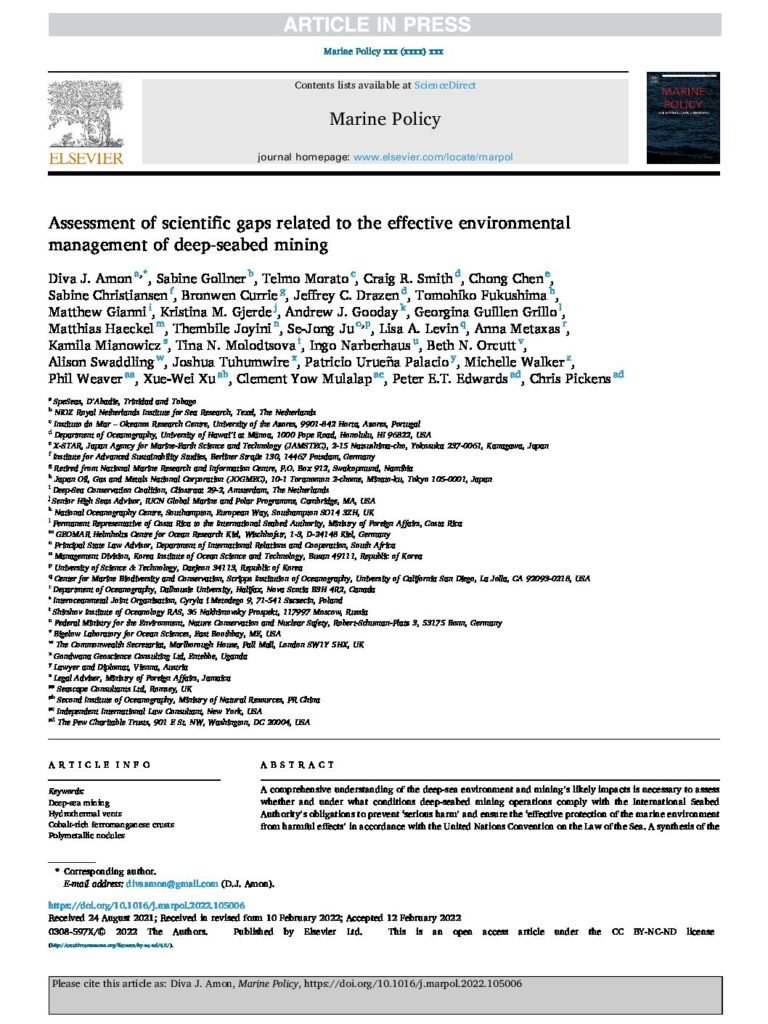Assessment of scientific gaps related to the effective environmental management of deep-seabed mining

Author:
Diva J. Amon, Sabine Gollner, Telmo Morato, Craig R. Smith, Chong Chen, Sabine Christiansen, Bronwen Currie, Jeffrey C. Drazen, Tomohiko Fukushima, Matthew Gianni, Kristina M. Gjerde, Andrew J. Gooday, Georgina Guillen Grillo, Matthias Haeckel, Thembile Joyini, Se-Jong Ju, Lisa A. Levin, Anna Metaxas, Kamila Mianowicz, Tina N. Molodtsova, Ingo Narberhaus, Beth N. Orcutt, Alison Swaddling, Joshua Tuhumwire, Patricio Urue˜na Palacio, Michelle Walker, Phil Weaver, Xue-Wei Xu, Clement Yow Mulalap, Peter E.T. Edwards, Chris Pickens
Publication Year:
2022
Citation:
Amon, D.J., Gollner, S., Morato, T. et al. 2022. "Assessment of scientific gaps related to the effective environmental management of deep-seabed mining." Marine Policy 138, 105006 (2022). https://doi.org/10.1016/j.marpol.2022.105006
Description:
This report seeks to provide a comprehensive understanding of the deep-sea environment and assesses whether and under what conditions deep-seabed mining operations comply with the International Seabed Authority’s obligations to prevent ‘serious harm’ and ensure the ‘effective protection of the marine environment from harmful effects’ in accordance with the United Nations Convention on the Law of the Sea. The report draws upon a synthesis of peer-reviewed literature and consultations with deep-seabed mining stakeholders to reveal that, despite an increase in deep-sea research, there are few categories of publicly available scientific knowledge comprehensive enough to enable evidence-based decision-making regarding environmental management, including whether to proceed with mining in regions where exploration contracts have been granted by the International Seabed Authority. Based on the information gathered, the report proposes a potential high-level road map of activities that could stimulate a much-needed discussion on the steps that should be taken to close key scientific gaps before any exploitation is considered. These steps include the definition of environmental goals and objectives, the establishment of an international research agenda to generate new deep-sea environmental, biological, and ecological information, and the synthesis of data that already exist.
See related content:
- Explore the site by related topics: Biodiversity, Habitat and Biodiversity Loss, Ocean Health
